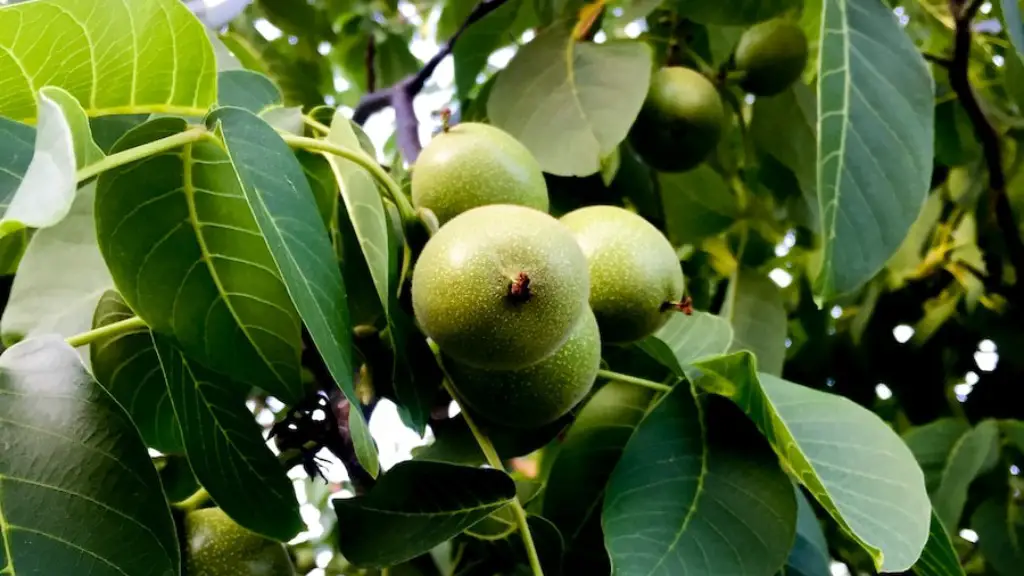Facts
A palm tree will not necessarily come back to life if the proper steps are not taken. In order for a palm tree to regrow, the perfect conditions must be met for survival, along with quality care and maintenance. With the right environment and care, a palm tree can thrive once again and look as beautiful as it did before.
Temperature, irrigation and pest control are all factors that can cause a palm tree to suffer or even die. Constant changes in temperature or lowered soil moisture can damage the plant. Additionally, pests can cause irreversible damage as some diseases can quickly lead to the death of the tree. That being said, some palms are more resilient than others, and may stand a better chance at surviving the effects of extreme elements and pests.
Tips for Proper Care
When attempting to revive a palm tree, the most important factor is providing the necessary nutrients that are essential to the health of the tree. Nutrients such as magnesium, nitrogen, phosphorus and iron are vital, as they are not only needed for the growth of the plant, but also help the palm fight pest infestations. Once the necessary nutrients are present, plenty of sunlight and adequate water should be provided in order for the plant to thrive.
Fertilizer and insecticides should also be used when attempting to revive a dead or dying palm tree. Fertilizers should be used in order to replenish the vital nutrients needed by the palm. Insecticides can help rid the tree of any pests that have taken residence, as well as help reduce the risk of future pest infestations.
Regular pruning of dead leaves and branches is also recommended, as this can help encourage new growth, as well as help reduce the risk of disease. Pruning should also be done in order to maintain the desired shape and size of the tree.
Assessment
When looking to revive a dead or damaged palm tree, it is recommended to begin with an assessment. The assessment should involve the inspection of the root system, trunk, leaves and any other existing damage. This will help in determining the most effective course of action needed to attempt to regrow the palm tree.
Experts in the field of palm tree care can also help in assessing the condition of the tree and provide tailored advice on the necessary steps needed to be taken in order to attempt to revive it. They may even suggest alternative methods, such as grafting, as a possible solution.
Conclusion
While the chances of a palm tree coming back to life can be fairly slim, taking the proper steps to care for the tree can help increase the chances of success. A combination of quality care and maintenance along with the right environment can help provide the best chance for a dead or damaged palm tree to regrow and thrive.
Winter Care
When caring for a palm tree during the winter months, the key is to protect it from the harsh elements that winter brings. The tree should be protected from strong winds, snow, frost and cold snaps. Protective coverings can be used to shield the tree from cold weather and ice. Additionally, plenty of moisture should be provided to the tree during this time in order to avoid freezing and other issues.
When temperatures drop, the tree’s growth may slow or even completely stop. As a result, fertilization and pruning should be postponed until at least the beginning of spring when the temperature starts to rise. In the meantime, it is important to regularly check the tree for signs of diseases or pest infestations.
Summer Care
Warm weather and long days of sunshine usually mean the full bloom of a palm tree. During the summer months, the palm should be thoroughly checked for pests and diseases. Regular irrigation is also recommended during this time in order to keep the soil moist and prevent dehydration.
Fertilizer should also be used, as any growth that may have been slowed during the winter months will now start to pick up. The use of fertilizer will help give the tree the additional nutrients needed for growth. Additionally, pruning should be done in order to maintain the desired height and shape of the palm tree.
Diseases and Pests
The most common causes of death or damage to a palm tree are diseases and pest infestations. Thus, it is important to regularly check the tree for signs of any disease or damage caused by pests. This can be done through visual assessment, or even by taking a sample of the tree’s leaves and having it tested in a laboratory.
The most common diseases that affect palm trees include nematodes, fungi and viruses, while the most common pests include scale insects, aphids, thrips, and mealybugs. When these pests and diseases are present, the use of insecticides and fungicides is usually the best course of action.
Protection from Extreme Weather
When subjected to extreme weather, a palm tree’s health can be compromised. During extreme heat, the tree should be supplemented with plenty of moisture in order to prevent dehydration. And during strong winds, protective cover can be used to shield the tree from the elements. With extreme cold, a better solution may be to insulate the tree. This can be done by wrapping the tree in a tarp or burlap and covering it with leaves or straw.
Additionally, it is important to be wary of sudden changes in temperature fluctuations. These can cause significant damage to the tree, especially during the winter months. If the temperature has suddenly dropped, it is best to cover the tree as soon as possible.



